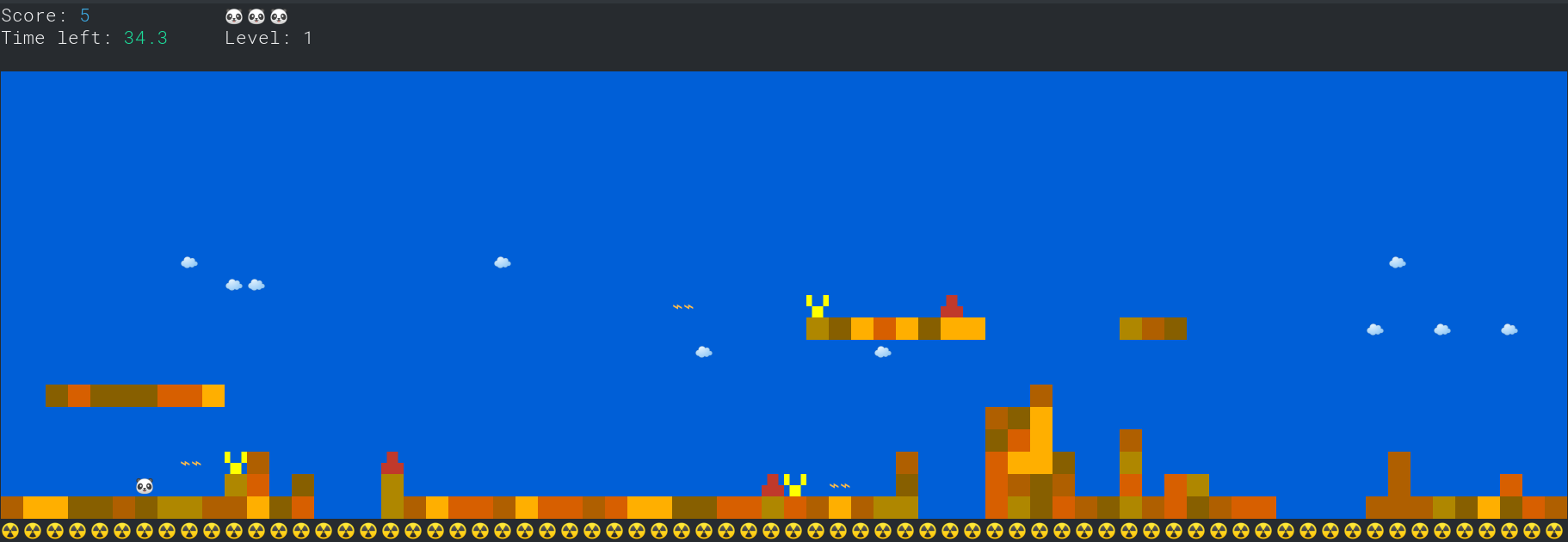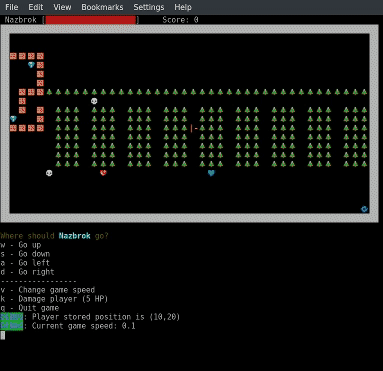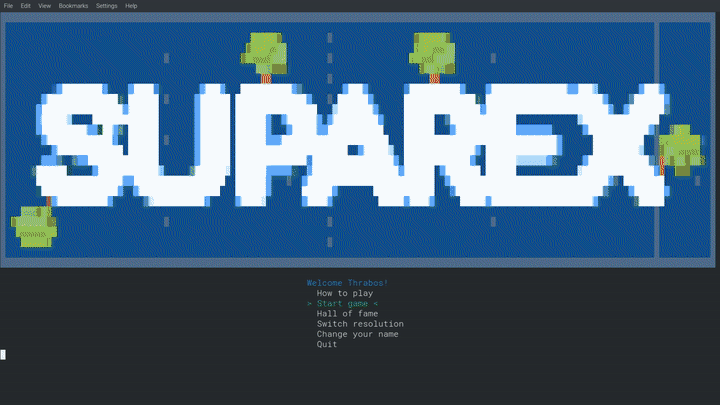A small game development framework for teaching programming.
Project description
pygamelib
A (not so) small library for terminal based game development.
Preemptive warning
Between version 1.1.1 and 1.2.0 the library was renamed from hac-game-lib to pygamelib and reworked to its core. So even though all the objects remains API compatible across versions, there is a bit of renaming to do in the imports.
Introduction
Historically, this library is used as a base to teach coding to kids from 6 to 15. It aims at giving an environment to new and learning developers (including kids) that let them focus on the algorithm instead of the lousy display or precise management.
It started as a very simple library with very little capabilities, but over time it became something more. To the point that it is now possible to make very decent games with it. So this is obviously still extremely simple compared to other game framework and it still does not aim at being anything serious for real game developers. However, it can now be used by aspiring game developers for an introduction to 2D games development.
There is a Youtube channel that contains tutorials.
Here is a quick view of what can currently be achieved with that library (base_game haven't been updated for a long time):
The base game makes use of:
- The main "game engine" (pygamelib.engine.Game)
- Many different types of structures (from pygamelib.board_items): Wall (well the walls...), Treasure (gems and money bag), GenericStructure (trees) and GenericActionnableStructure (hearts and portals)
- Game()'s menu capabilities.
- Player and NPC (from pygamelib.board_items)
- Inventory (from pygamelib.engine.Inventory)
- Player and Inventory stats
- RandomActuator (NPCs in level 2) and PathActuator (NPCs in level 1) (from pygamelib.actuators.SimpleActuators)
For more up to date examples, have a look at:
- examples/suparex/ a platform game with procedural level generation
- examples/tutorials/03-game-design/ for a more "dungeon-y" turn by turn experience.
Here is a poorly done gif of Suparex:
Strong points
Hopefully you'll find the pygamelib to have a lot of strong points:
- It is simple. It requires very limited Python knowledge to start coding games.
- Yet powerful offering more advanced programmers a lot of possibilities.
- The possibilities scale up with the students offering basic feature and default values "good enough" for beginners and lots of tunning opportunities for the advanced coders.
- Lots of stuff are available by default. Any idea how long it would take a beginner to display only a part of a board? 1 second with the pygamelib, probably slightly more if they had to do it by hand ;)
- It is Terminal based. This means no graphics card dependencies, cross platform, and a framework that stimulate imagination and creativity.
Installation (recommended)
The easiest way to install a stable version is to use pypi:
pip3 install pygamelib
It will pull all dependencies
Installation from sources and requirements
Python
The pygamelib only supports Python 3.6+. It will not run with Python 2. We use pipenv to manage dependencies.
Run Pipenv to install the requirements:
pip3 install pipenv
pipenv install
If you want the development dependencies you need to run:
pip3 install pipenv
pipenv install --dev
Runing tests
To run the unit tests use the following command:
python -m unittest discover -s tests
Terminal color and emojis
It is not really a hard requirement but colored emojis are really bringing the games created to life.
We then recommend to have a color emojis font installed like Noto Color Emojis (on most Linux distributions you can install it from the package manager, search for "noto-color-emoji").
If your terminal application is not displaying color emojis, please have a look at this file and follow the instructions.
Running examples
To run the examples using pipenv:
pipenv shell
(pygamelib) cd examples/suparex
(pygamelib) python3 suparex.py
Limitations
There is tons of limitations but for the most important ones:
- Only one player is supported.
- There is little protections against messing up with the internal. This is on purpose, I want the kids to learn to use the API not mess up with the internals of every single class.
- It's pure Python (it's slow).
Project details
Download files
Download the file for your platform. If you're not sure which to choose, learn more about installing packages.
Source Distribution
Built Distribution
Hashes for pygamelib-1.2.2-py3-none-any.whl
| Algorithm | Hash digest | |
|---|---|---|
| SHA256 | d2d614d3d888af309757986a7befd4313fa50472793c270022b4944cc6425380 |
|
| MD5 | 1d682948e786f9718e1a11f33c678da1 |
|
| BLAKE2b-256 | ef958f5dd48f60a6a39161ebc88d03f784ded26dfda215ae511b3199c8137988 |























